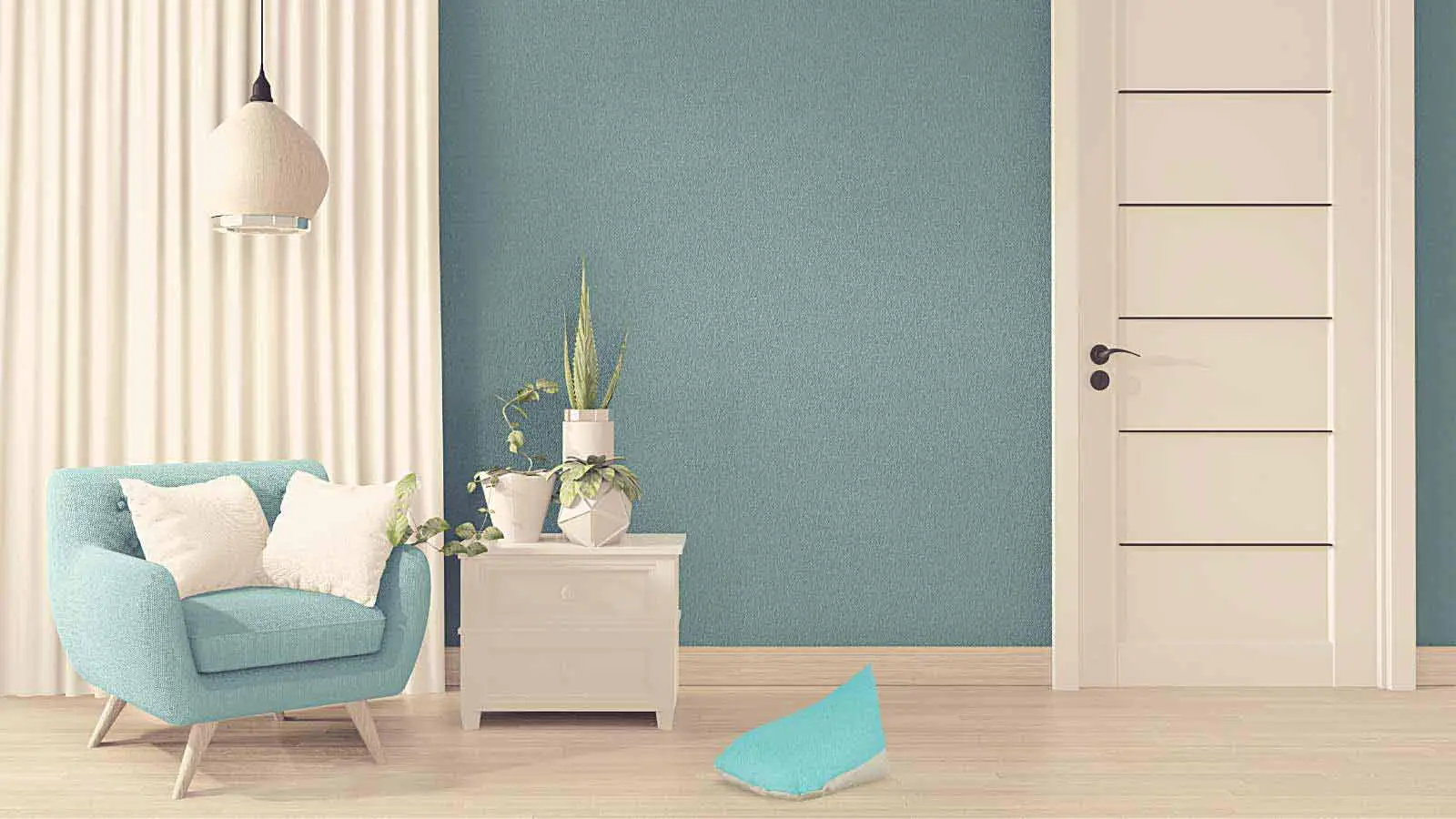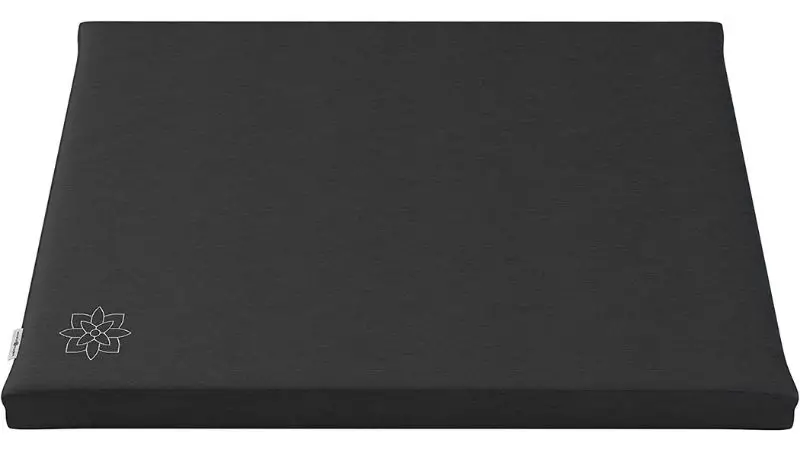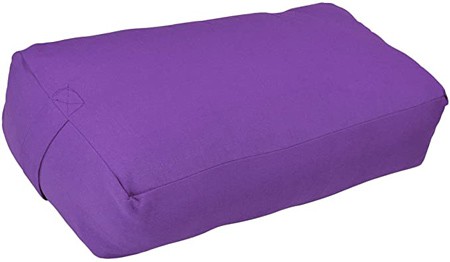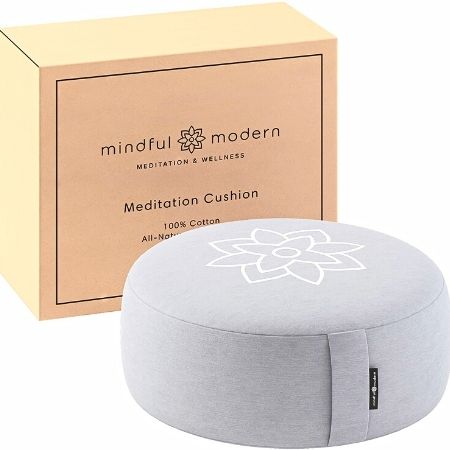When you have decided to purchase a meditation pillow, it can be challenging to choose from all of the different options. This is especially true if you don’t know what is considered the right pillow for meditation.
Finding a good meditation pillow highly depends on the amount of support you are looking for. Quality meditation pillows will support good posture and will allow the focus to be on meditating rather than physical discomforts.
There can be a lot of factors to consider when deciding on a meditation pillow, but most of it will come down to you. Deciding what will be best for your comfort and support rather than hinder your meditations. Keep reading for five things to look for in a meditation pillow.
Things to Look for In A Meditation Pillow
When purchasing a meditation pillow, you must consider multiple things – about you and the pillow itself. Knowing what factors to look for will help make using the pillow much more comfortable and allow you to use it longer.
First and Foremost: A Mediation Pillow Provides Comfort
A meditation pillow is there to help keep you comfortable longer and help you not become distracted by physical discomfort.
A proper pillow will allow you to practice meditation for as long as your mind is mentally able, instead of stopping for any physical reasons.
A few tips about comfort:
- You should be able to sit on the meditation pillow comfortably and naturally, which I will explain further in the next point.
- When you are first using a pillow, you should spend brief meditation periods analyzing your body to search for any discomfort. This will help you find if you may need either another pillow or to adjust your posture.
A Meditation Pillow Provides Proper Alignment
As I mentioned previously, a cushion is there to allow you to sit comfortably. More specifically, a meditation pillow should help your body fall into proper alignment.
The best position is for your sacrum to be at a 30-degree forward tilt. This should allow the rest of the curves of your spine to fall into place.
It isn’t uncommon for your sacrum to be either over tilted or even tilted backward. This can cause your spine to curve in a way that isn’t natural to it. A proper meditation pillow is made to help you find this perfect balance, but there are other tips you should remember while meditating.
The Pillow Must Be Supportive for Seated Poses
This is an important part to note when choosing a pillow that will also provide the proper alignment, as I mentioned above.
How you sit will significantly depend on your pillow and your comfort.
It would help if you had somewhat of an idea of what pose is the most comfortable to you before purchasing a pillow; otherwise, you may buy a pillow that won’t benefit you as greatly.
Kneeling Pose
This is a great pose if you have a proper pillow for it.
- You will want to sit on your knees with your pillow between them for support.
- You will be seated on the pillow and slightly leaned forward if you are doing this pose properly.
If you don’t have the right pillow for this pose, then you may run into the issue of the pressure on your joints being too much. It could also cause poor circulation, which is what the pillow should help alleviate.
The best style for this form of meditation is a smaller pillow that can fit between your legs easily when kneeling. There are plenty of pillows that would work great for this position, and I will go over them in more detail further down.
Lotus Pose
The lotus pose is an iconic meditation pillow, but it can be somewhat difficult for many who wish to meditate.
- The lotus pose is known for having both feet sitting high on your thighs, but that can be difficult for any who aren’t as flexible. This can hurt your knees and hips and cause discomfort during your meditation.
There are several variations of this pose that will make it easier for those who aren’t able to reach the lotus pose comfortably. Each of these poses can utilize a pillow to assist with proper alignment during meditation.
Half Lotus
This is the same as the full lotus, but instead, you would only place your upper leg on your thigh. This eases a lot of the difficulty found in the full lotus pose.
You need to sit with one leg on top of the other, then move one leg up higher onto your thigh. This pose is the first step down from the full lotus, but you will find that it can be achieved much more accessible with less physical strain.
Quarter Lotus
The quarter lotus pose is beneficial to any who aren’t able to pull their top leg up to their thigh.
This is a great position to start with, or just for those who aren’t as flexible. You rest one leg on top of the other and let your leg rest where it is comfortable there. This will usually fall somewhere lower on your thigh or even at your knee.
The biggest thing about this position is to remember that you are meant to be in a comfortable form. So this means your leg will rest wherever it is most comfortable. This can even mean your leg doesn’t reach your knee but ends up resting more on the calf of your lower leg.
Using a Meditation Pillow for Lotus Poses
All of these positions can be used with a meditation pillow, and many find it easier to achieve more flexible positions using a pillow.
Sit on the edge of the pillow, and let your legs gently slope to the ground in whichever lotus position is most comfortable.
This will give your spine the much-needed support that you aren’t always able to achieve from the ground.
Cross-Legged Pose
Keeping things simple is sometimes the best when it comes to a comfortable pose. The best part about this position, like the lotus pose, is that the meditation pillow helps keep your hips open in a way the ground wouldn’t.
As with the lotus pose, you need to sit on the edge of the pillow and cross your legs as you find comfortable.
You will find that a pillow will give you the support and openness that will allow you to meditate for longer and much more comfortably than before.
Arched Back Pose
This is one of the less common poses and is best used with a smaller cushion rather than a larger pillow.
To achieve this position with your pillow, you will sit down in front of your pillow and lean back over it with your arms extended overhead.
This position is excellent for long and deep breaths during meditation. It will open up your chest and ribcage, along with stretching out your abdomen. This pose can be great if you are feeling any back pain and is a great stretch after a yoga session.
Child’s Pose
This is a favorite for many who enjoy yoga. This is the most straightforward pose to achieve and can be very comfortable. The child’s pose requires you to sit on your knees and lean over them with your arms in front of you.
To incorporate a meditation pillow during the child’s pose, you would rest your head on it to alleviate any stress from overstretching in this pose.
Other Poses
The majority of any meditation pose can be adjusted to incorporate a meditation pillow. The pillow is typically best to ease any stress in joints or assist in proper posture. So, when you are meditating and deciding a pose, remember the key points you want to achieve in your posture.
Material: Linen Vs. Hemp
The fabric covering of your pillow is another option you’ll consider. You’ll obviously want something comfortable. And durability and strength are two other important factors – your pillow is going to help support you. And most of us want something natural and breathable. Two great materials you’ll see out there are linen and hemp.
Linen

Linen is known for being durable, cool to the touch, and absorbent. All great qualities for a yoga pillow covering. It is woven from the flax plant’s stem, which needs little water, fertilizer, or pesticides to grow. Linen is an eco-friendly, biodegradable, and sustainable fabric.
While it doesn’t require a lot of resources to grow, linen is quite a labor-intensive material to process – which is why good-quality linen fabric – and the products made from it – are expensive.
Hemp

Hemp and linen are closely related in many ways. Hemp is also woven from a plant stem’s fibers and is known for being strong, durable, and absorbent. Its environmental cost is low, as the plant requires little water and few pesticides or fertilizers. And hemp needs no herbicides at all because it is naturally immune to most pests.
Hemp is grown widely around the world, and while it is more expensive to produce than traditional cotton, hemp outshines cotton for being sustainable and friendly to the environment. Not to mention more durable and cooler than cotton. Its porous texture allows the fabric to breathe and stay cool.
What’s the Difference?
Hemp and linen have so many similarities that the naked eye can’t see the difference in their fibers. They are both durable, breathable, environmentally-friendly, and make great yoga pillows. Both fabrics dye very well and grow softer and comfier with use.
While both fabrics are great choices, hemp is the preferred fabric of many for its exemplary eco-friendliness as a high-yield crop, requiring zero-pesticides and serving as a great rotation crop for many farmers.
For a yoga pillow, it wins out as a fabric that is highly resistant to mildew, mold, and sweat than other natural fibers, including linen.
Filling: Kapok Vs. Buckwheat
This is an essential factor that many don’t consider when purchasing a meditation pillow, which is what is the best cushion-fill. The two most used fills are kapok and buckwheat hulls. They are both excellent in their ways, but each person has their preferences.
Kapok

Kapok is an all-natural fiber that is pulled from the seed pods that are found in the kapok tree. It is lightweight and water-resistant, which is excellent when preventing mold. It is also hypo-allergenic, which is great for any who may be sensitive to dust or other such substances.
The biggest con to this fill option is that it is so fine that it is easy for it to make a mess when filling a pillow. Make sure to note this fact if you choose this substance and to fill the pillow in an easy to clean area.
Buckwheat
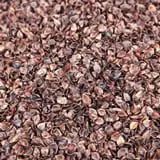
Buckwheat hulls come from buckwheat milling, and they are pest and water-resistant. These are usually great for a firm, body-fitting pillow that will stay in whatever shape you prefer it has. These cushions tend to be much denser than a kapok cushion, and it tends to weigh more due to this fact.
What’s the Difference?
The main thing to note between these two is what you prefer in your pillow. The buckwheat is excellent for a denser, more grounded pillow. At the same time, kapok is much fluffier, which also means that it is lighter than buckwheat.
Both fills will form to your body and support your weight, but some find that buckwheat is more stable due to it being denser. These are both great fill options, and they are environmentally friendly, which decides up to the user.
Meditation Pillow Shape Is Essential
There are a wide variety of pillow styles to choose from. Each style is excellent in their rights, but there are a few stand out options that most people tend to gravitate to. This can be based on the pillow shapes, or just the brand itself is well known.
While all meditation pillows strive to promote comfort and support, each variation has reasonings for its shape and style. The idea behind the right pillow for you is that it encourages a healthy posture and prevents pressure on your body. Some of the best pillows will promote the raising of your hips above your knees and allow your spine to maintain a healthy curvature.
Popular shapes of mediation pillows:
- Ergonomic Meditation Cushion
- Zabuton mat
- V-Shape Cushion
- Zen Pillow
- Meditation Bench
- Classic Zafu Pillow
Good Monday Meditation Pillow
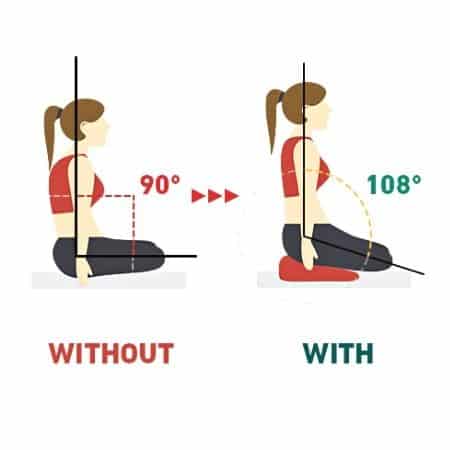
The Good Monday Meditation Pillow has a gentle slope to it that allows your spine to assume its natural S-shape when you are seated on it. This is a great example of how the shape of your pillow can positively impact your practice.
The S-shaped posture of your spine is important in keeping your neck, shoulders, and lower back in healthy alignment. The gentle “s” created by these three points helps keep your back upright – and absorb some of the stress and pressure of your body.
A sloped mediation pillows allows your knees to sit below your hips and gently lifts your pelvis to nurture that healthy, S-shaped posture. This pillow is highly recommended.
Zabuton mat
A zabuton is a large square mat/pillow that is typically flatter to the ground than most pillows. This pillow is known best when paired with other pillows, like a zafu cushion.
When pairing a zabuton with a zafu, you will be able to sit up high as I described in the poses section, but it will provide support for your knees. This means that rather than your knees or feet resting on a hard surface, they would be cushioned by the zabuton.
If you do not have a secondary pillow, you are still able to achieve a similar feel with just the zabuton. You can fold one end of the zabuton slightly over, as you will only need a small edge to sit on. This is great to test if you may be interested in purchasing another pillow along with the zabuton, or this may be all you need in a meditation pillow.
These are great meditation pillows for people who may find themselves okay with sitting on the floor but want more cushion when sitting. These can be used in a wide variety of situations.
V-Shape Cushion
This V-shape cushion is with a slight slope down for where your legs will rest. These cushions are great for anyone who is already flexible and wants more support for their lower back or knees.
If you are not flexible, or your back is rounded when you are sitting on the ground, then you will not find this cushion especially helpful. This is similar to the zabuton due to it being best for those who are comfortable sitting on the ground. It merely adds more comfort and support to the positions than the ground.
The biggest con to this cushion is that it is more limited in the ways you can sit on it. You can achieve the basic poses that involve crossing your legs, but it isn’t made to use in many other ways.
However, many people do enjoy that this pillow is small enough for a chair, so they can sit cross-legged while working at a desk. You would need to have a high enough desk that your knees wouldn’t hit it while working.
Zen Pillow
This pillow is similar to the zafu in height but feels higher to many due to the difference in shape. The pillow is rectangular and is highly recommended to any who needs that extra height while meditating.
Due to the rectangular shape, there is more stability than the rounded zafu pillow. If you feel unbalanced when using a zafu pillow, then this may be the best option, as many have reported that they prefer this due to the stable seat.
Like the zafu, you can pair Zen pillow with a zabuton. It would offer more comfort and is considered a more luxurious setup. The more comfort you can achieve during use, the longer you can meditate without physical needs interfering.
Meditation Bench
Meditation benches are great if you want a firmer foundation for a kneeling pose. These benches are made to allow you to sit on your knees, with your legs going under the bench. This is great to prevent any circulation from being cut-off while meditating. It will also provide an accessible open seat for your pelvis, that almost prevents poor posture.
The best term for the posture required while using a meditation bench is the seiza position. This is a Japanese kneeling pose that is great for any who find it difficult to meditate in a cross-legged pose.
Many different meditation bench styles allow for slightly different kneeling posture, but it will depend on what you find most comfortable. Some prefer having a slightly wider stance, while some prefer the typical pose that requires your knees to be together and under the bench.
Zafu classic Meditation Pillow
A zafu is a round meditation pillow that is traditionally filled with either buckwheat hulls or kapok. This classic shape meditation pillows are always the first ones to catch the attention. Zafu cushions usually are about 35 cm (14 inches) wide by 12 -14 cm (5 – 8 inches) high and made of durable materials such as cotton or hemp.
The filling and material of Zafu will make a big difference in the comfort of the pillow. If you prefer the softer base under you, choose a pillow filled with a kapok. If you like a firm base, look for a buckwheat zafu.
Most of Zafu pillows have a removable cover and carrying handle, which means you can bring your favorite meditation cushion to different places and keep it always clean.
Brands

After deciding on a shape that will suit your meditation purposes best, you must consider where you are going to purchase it. Finding the right pillow can also come down to finding a quality brand that will stand up to multiple uses and not have any support.
Equally important to mindful consumers today is purchasing from an equally mindful brand. Look for eco-friendly brands that sell biodegradable, earth-loving products that contribute to your well-being – as well as the well-being of this world.
When you choose a product that is well-made from materials that are grown in a way that is mindful of the earth, ethically sourced, and friendly to the environment, you are making a choice that you can feel good about. You are making a positive impact by being mindful of the businesses you choose to support.
Once you have some options for a meditation pillow in mind, check out who you are buying it from:
- Do some online research;
- Pay attention to user reviews – what are users saying?
- Make sure the company details the fabrics and materials they use;
- If they have a blog, read it: are they aware of their responsibility to the planet?
- What kind of packaging does the company use?
- Contact them and ask questions that are important to you. (And this is a great way to find out how they treat customers – and fellow humans.)
We meditate because we want peace of mind and value health. By buying from a company that feels the same, you contribute to the health of our planet – and that, in turn, contributes back to your own well-being.
When You Find a Pillow You Love
When you find that perfect pillow that works for you and is made of materials you feel good about and feel confident buying from the company you feel good about, let the world know. You know the kind of work you put into finding the meditation pillow that suits you. Maybe you can help make it easier for someone else.
Spread the Positivity
Today’s world can only benefit from sharing the good stuff, positive thoughts, and heartfelt gratitude for a job well done. If you find great customer service, share it. If you love the way your new hemp pillow has elevated your practice, let the company know. These small steps we take to let someone else know we are grateful for their work goes a long way in keeping the world a kind place.
Final Thoughts
When choosing a meditation pillow, the main thing to keep in mind is your comfort. The purpose of a pillow or cushion is to support you and keep you comfortable during meditation. You shouldn’t feel heavy physical discomforts while using pillows, and they should help you stay properly aligned.
The material and filling of your pillow go a long way in supporting your comfort. Durability, strength, absorbency, and breathability are some of the key factors that will make the outside of your pillow right for you. The filling of your pillow will determine how dense and firm your pillow is and how well it supports your body. The kind of pillow you use will heavily depend on what type of support you need. Starting with a pillow that works for multiple poses is usually a good idea. Then you can expand into other areas as you learn more about your meditation style.
The ultimate choice comes down to you and how your mediation pillow makes you feel. Once you narrow down your choices, shop around and find a company you feel right about – one that is as mindful about the earth and healthy living as you are.

